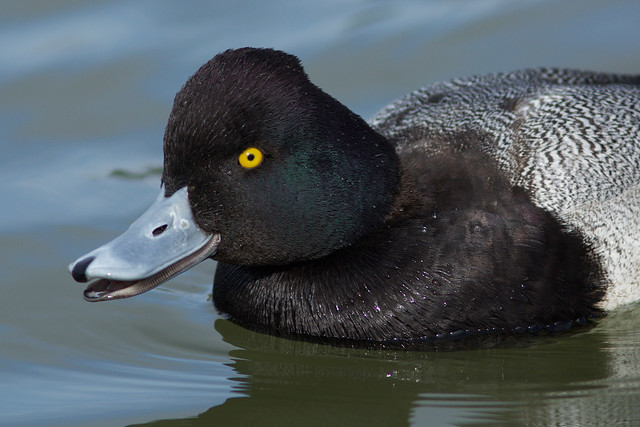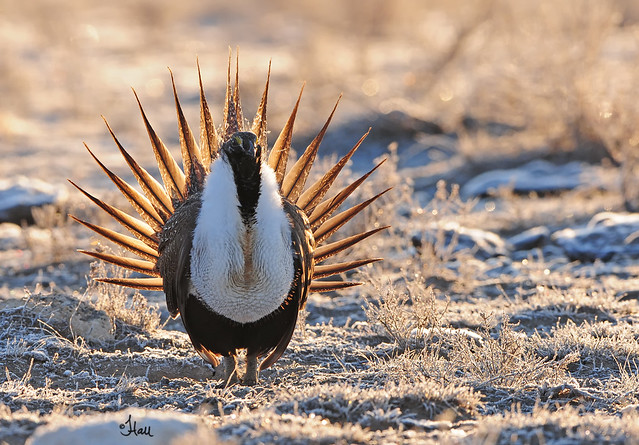It's beginning to feel a lot like spring in the Laramie Valley, though we're not celebrating just yet. Nevertheless, the warm weather has really stirred up bird activity in the past week!
Waterbird migration continues to supply the bulk of new birds to the area, with American White Pelicans, Double-crested Cormorant, American Coot, Northern Shoveler, Greater Scaup, and Cinnamon Teal making appearances on the plains lakes recently. Ring-billed, Herring, and California Gulls have also moved back into the area in good numbers. Now would be a good time to pick through those gulls carefully, as there are several interesting species along the Front Range that could conceivably make their way through our area soon (Thayer's, Iceland, and Mew Gull among these species). Great Blue Herons, Sandhill Cranes, and Killdeer are also new additions this week.
In town, Northern Flickers, House Finches, Song Sparrows, Eurasian Collared-Doves, and Pine Siskins are all singing. Juncos are still around,
though less common than a few weeks ago when we had colder weather.
American Robins have also made a major push into the area and seem to be
setting up territories.
 |
| Sandhill Cranes. Photo by Nate Behl. |
On the plains, Mountain Bluebirds and Horned Larks continue to increase in numbers. Curiously, there are still no Western Meadowlark reports from the plains, though they are almost certainly out there. McCown's and Chestnut-collared Longspurs are making their way up the plains along the Front Range and should be arriving in the next week or so, as should Say's Phoebes. A Marsh Wren at Gelatt Lake marks the first of this species in the area this year.
Pine Grosbeaks, Pine Siskins, and Red Crossbills continue to impress in the Snowies. By contrast, passerine numbers are just starting to increase in the Laramie Range, most notably with the arrival of American Robins. Male Dark-eyed Juncos were heard countersinging in the Snowies, suggesting that Gray-headed Juncos may have arrived and are setting up territories, though no visuals were obtained. At least one Bohemian Waxwing was found along Sand Lake Rd. in the Snowies. As the snow continues to melt, south facing slopes with juniper and bearberry are being exposed, providing food for this and other frugivorous species. Hairy Woodpeckers were also heard singing and drumming in both the Laramie and Snowy Ranges this week and a couple Dusky Grouse were found in the Snowies.
Sadly, Saturday's owling trip to various places in the Laramie Range failed to yield a single owl, as did at least one trip to the Snowies. It's possible that we're just a bit early for owls to be easily detected. Nevertheless, several moths were found flying around at night in both locations, and butterflies should be emerging any day now -- Mourning Cloaks and Milbert's Tortoiseshells were seen in Cheyenne and Curt Gowdy State Park. In other non-avian news, Tiger Salamanders, Boreal Chorus Frogs, and possibly Wandering Garter Snakes should be emerging any day now.
The next few weeks should be quite exciting. This is the time of the year when spring migration combined with heavy, wet spring snowstorms can produce magical birding opportunities in the Rockies. At least some snow is forecast for this week, so get out there!














